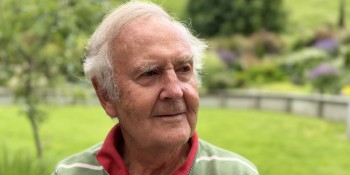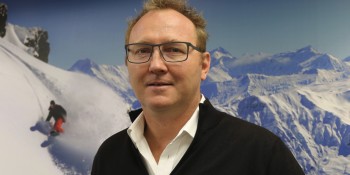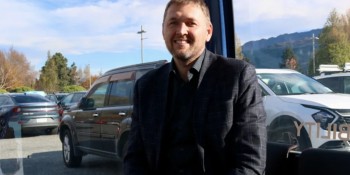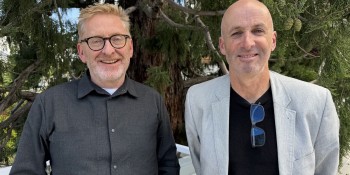Economist - "Queenstown's Ponzi Growth Scheme"
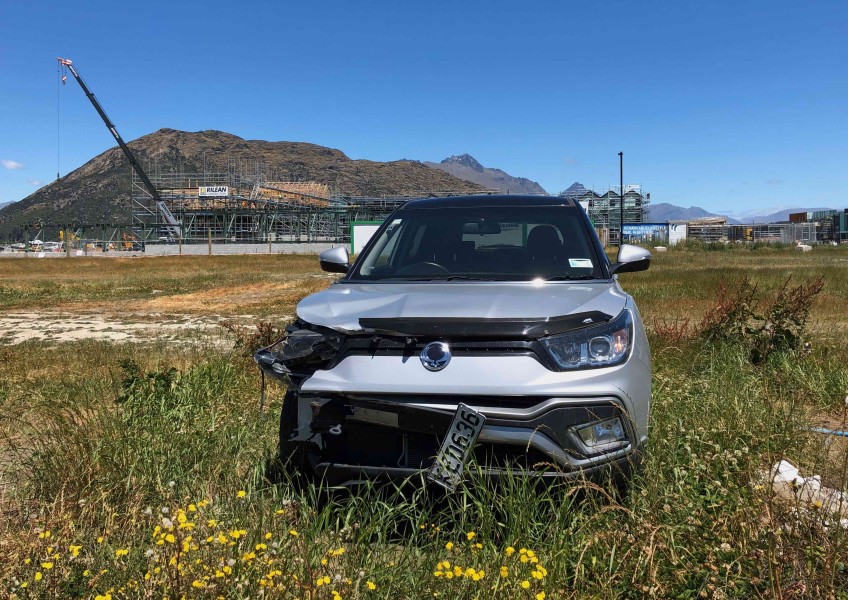
Reader Commentary.
Ralph Hanan is a former senior World Bank economist who splits his time between home in Queenstown and Washington DC. In this commentary article for Crux, Ralph argues that many aspects of our local economy resemble a Ponzi scheme where most of us locals end up losing money - and more. Have the rich been robbing the poor in the name of growth?
Main image: A wrecked tourist rental car sits in front of Queenstown construction work.
The coronavirus is challenging all of us. Some groups wish to restart our traditional tourism economy as soon as possible, while others are contemplating alternative visions for the future of our region. Notably, Crux is working on Project Phoenix, which is a competition of ideas for the future of Queenstown and our Lakes District.

Senior economist Ralph Hanan
As these groups and the judges of Project Phoenix work on ways to reshape our future, I’d like to present four issues that I suggest will be major influencing factors. These are the hitherto rampant growth of our population and tourism, the economics of our traditional tourism model, the governance of our District, and our values.
I should comment at the outset, it is unlikely after the pandemic that Queenstown will return to its traditional tourism economy. We’re also unlikely to see a V-shaped recovery in the next 12 to 18 months. Life will be tough. As a community, we should reaffirm or recalibrate our values and rethink our goals and strategies for our economic growth and wellbeing long into the future.
The issues discussed below should resonate however we envision our future.
Growth of Population and Tourism
That QLDC is addicted to increasing the numbers of our residents and tourists is beyond question. In its 10-Year Plan 2018-2028, QLDC projected the District’s population - residents and visitors on an average day - to increase from 62,900 in 2018 to 80,800 in 2028, an increase of 28%. On a peak visitor day, the numbers were projected to increase from 117,300 to 149,000, an increase of 27%. The Wakatipu ward comprises around 67% of these figures and the Wanaka ward 33%.
Why, we may ask, is QLDC so inured to increasing these numbers? Are there no limits to the capacity of the District, and especially the Wakatipu region, to absorb such numbers? Five suggestions come to mind. The first is that more people will add to our local economy and thereby increase our standard of living and our general wellbeing. This reasoning is a fallacy, as I will point out in the next section.
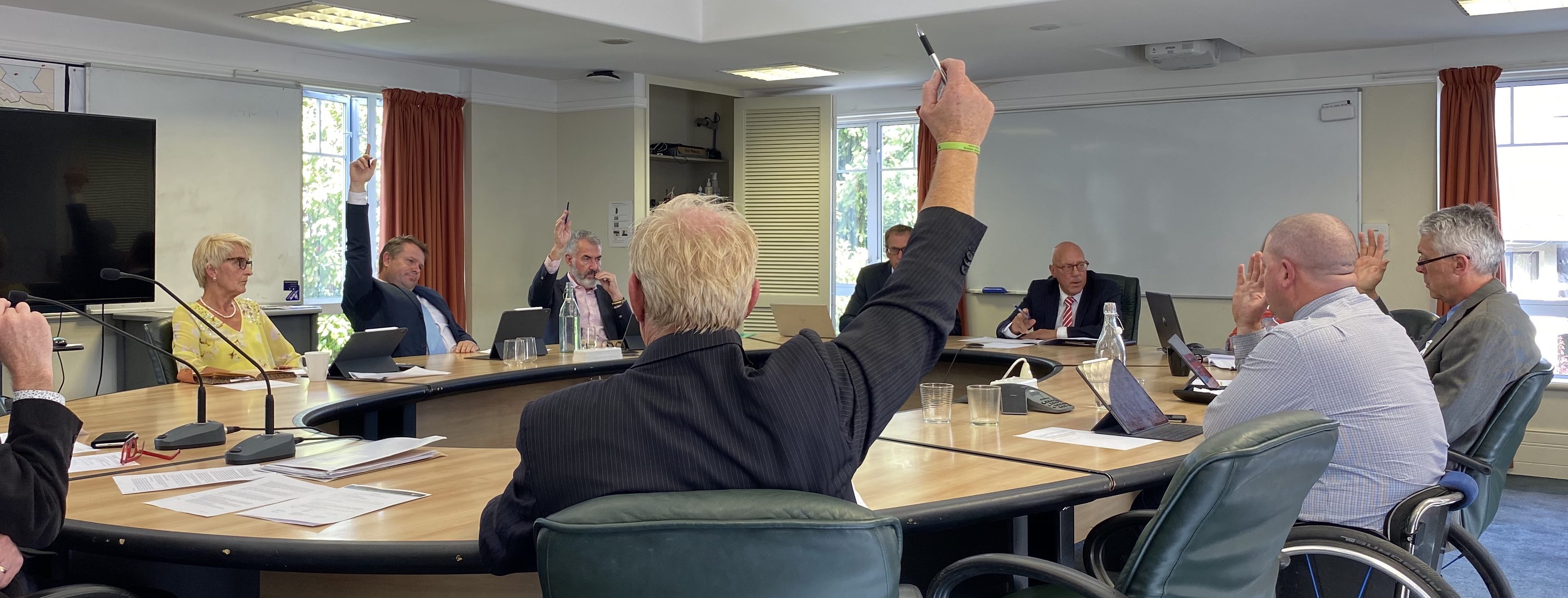
QLDC - addicted to growth?
A second is the underpinnings of capitalism. Nowhere in NZ is the entrepreneurial spirit of capitalism, with its inherent greed, so engrained as in Queenstown. To sustain the growth of our economy we require more hotels, restaurants, hair salons, and other service businesses, employees to work in them, and accommodation for the employees. These businesses generate revenues and profits for the investors who, with those profits and leveraged debt, pursue investment in more hotels, restaurants, etc, which in turn require more employees and more tourists to generate yet more revenues. Round and round, and up it goes.
More begets more, supported by a belief that bigger is better. For many of us, it is simply the way it is. But it has features of a grand Ponzi scheme which, by definition, becomes at some point unsustainable. The fact that some of the profits are siphoned away from our area and many employees serving these businesses are on the minimum wage (and now unemployed) is of concern, but parenthetic to the argument.
A third reason is that most of these investments are made by well-resourced special-interest groups, particularly developers and land owners. Encouraged by QLDC’s expansionist policies, they see opportunities to invest in new businesses and rezone their land to generate profits and increase their wealth.
Not least, these vested interests have always exercised disproportionate influence over QLDC’s policies and decisions. At some point however, these interests collide with the interests of the community at large, and with our responsibility to care for our natural environment. We shouldn’t underestimate the cupidity of some of these vested interests. Before the nosedive wrought by the coronavirus, our community had become vexed with the increasing traffic congestion and pressures on our aging infrastructure. We may reflect here on Garrett Hardin’s scholarly article, “The Tragedy of the Commons.”
A fourth reason is, QLDC depends on the additional revenues from rates on the new developments while incurring minimal upfront expenditures. Land owners expend resources (equity and debt), to complete their developments and sell the sections for profit. They pass responsibility to QLDC for maintaining the public areas - minor streets, curbs, paths, related infrastructure, and green space. It follows that QLDC has a financial interest in consenting new developments. But it ignores the longer-term liabilities of maintaining and eventually replacing the infrastructure. There is no way the rates levied on these developments can cover these substantial costs. The liabilities must be borne by future Councils.

Development - creating debt to be carried by future councils?
The re-zoning of more rural land for more new housing developments has become indispensable for QLDC to fund its long-term liabilities from prior developments. This gravy train of privatizing the investors’ profits and socializing the costs rolls relentlessly on. It too has Ponzi features, and like all Ponzi schemes it will eventually stop. The piper will have to be paid, and meanwhile our current councilors will have long vacated their Council seats.
Worse, residential investment gives the illusion of prosperity but often is a non-productive use of scarce capital. If not contributing to the rental stock, it provides no streams of benefits into the future beyond the provision of shelter. In as much as the capital could be invested in new businesses that generate streams of revenues and profits into the future, the investment in new housing incurs an opportunity cost. Excessive growth of housing also generates environmental and social costs, e.g. the congestion on our limited roading infrastructure.
To my mind, the only reasonable solution to the excesses of this Ponzi demographic is, the costs of all future residential and commercial development should be paid for by those who generate the costs. It is not fair that the future liabilities should be socialised, underwritten by the ratepayers or by encouraging more housing developments with more sprawl. Developers should be required to contribute to a sinking fund sized to cover the future costs of maintaining the public areas and replacing the associated infrastructure.
A fifth possible reason for QLDC’s enthusiasm for more residents could be that we have a charitable obligation to share our bounty with those who are less fortunate to live in this beautiful part of the world, or in New Zealand. With the world’s population ballooning towards 8 billion and the accelerating impacts of climate change, we should be willing to absorb more residents. Or possibly a belief that anybody who wants to live in our District should have the right to do so. Central Government, moreover, has wanted to relieve Auckland of its population pressures and redistribute people and economic opportunities to the regions, including our District.
We may wish to rethink the Ponzi features of “growth” according to QLDC.
Our Tourism Economy
QLDC continues to view “growth” as increasing the numbers of residents and visitors. It presumes this to be good. Implicit in this view is the increases contribute to a larger local economy and therefore a sense of greater community wellbeing. Most references elsewhere to growth are an in an economic context, principally as Gross Domestic Product (GDP). Countries and regions compare their economic performance in terms of GDP, and particularly as GDP per capita. We should bear this distinction in mind as we contemplate how to shape our future.

As far as the eye can see - redundant camper vans and rental cars near Queenstown airport.
It is not widely appreciated that New Zealand’s productivity is disappointing compared to other developed countries. For several years it has been about 30% below the average of the top half of the 37 OECD countries. Moreover, the OECD reports that the hours worked per capita in NZ are about 17% more than the average of the OECD, which means that the value of output of labour per hour worked is about 40% below the average of the top half of the OECD countries. This productivity is comparable to that of Turkey and Lithuania.
Over the past 10 years, the average annual increase in NZ’s productivity, as measured by GDP per capita has been just 1%. Most of the increase in our GDP has derived from population increase, primarily immigration. Our persistently low growth of productivity means lower personal wages and incomes and lower tax revenues for the Government. Notably, Australia’s GDP per hour worked is about 40% higher than NZ’s. I’m reminded of a comment by Liam Dann in his 22 July 1918 Herald article, “Our economy desperately needs the productivity gains and high-wage jobs that only the tech, innovation and creative sectors can drive.”
Turning now to Queenstown and our Lakes District. QLDC’s 10-Year Plan (2018 to 2028) shows the “mean income” in the Lakes District in 2016 was 15% below the mean for NZ as a whole - $49,780 compared to $57,780. The Plan projected the District’s population to double over the next 40 years – 2018 to 2058, from 38,000 residents to 75,000, with a similar growth of tourism.
Curiously, the Plan presented no red flags to suggest that QLDC’s economic growth model was underperforming, delivering a mean income 15% less than NZ as a whole. There was no discussion about how QLDC might revise its policies to improve the District’s economic performance, and particularly to increase the low wages and redress the inequality of incomes. QLDC’s investment programs and projects, and funding proposals, were intended to accommodate its projected numbers of residents and tourists. It was business as usual. Again, bigger is better.
Recent data from Infometrics substantiate our District’s disappointing economic performance. In 2018 the Lakes District’s economy (its GDP) grew by 4.6%, which at first glance appears robust. But our population grew by 5.7% and our employment in terms of jobs filled grew by 7.1%.
Put simply, if the numbers of our residents and tourists grow at a faster rate than our local economy, we become individually, on average, worse off. That is, our GDP per capita will decline.
Worse, Infometrics’ Regional Economic Profiles for 2019 provide a discouraging snapshot of Queenstown Lakes’ performance. Taking four comparators, the “mean earnings” data (standard of living) in the profiles show Auckland at $68,259, West Coast at $56,758, Northland at $55,318, and Queenstown at $55,082. Queenstown Lakes is 3% lower than the West Coast!
Similarly, the “productivity” data (GDP per filled job) show Queenstown Lakes with $102,039, falling behind the other three comparators, including $113,626 for the West Coast.
Also relevant is the contribution that tourism makes to each of these regional economies: 4% for Auckland, 7.6% for Northland, 14.9% for West Coast, and (not surprisingly) 55.6% for Queenstown Lakes. This suggests that tourism has something to do with Queenstown Lakes’ relatively poor performance. You can access these 2019 economic profiles here.
https://ecoprofile.infometrics.co.nz/Auckland
https://ecoprofile.infometrics.co.nz/West%20Coast%20Region
https://ecoprofile.infometrics.co.nz/Northland+Region
https://ecoprofile.infometrics.co.nz/queenstown-lakes+district
Our District’s economic model appears stuck in a low-productivity treadmill of tourism. By its nature, tourism is a labour-intensive, low-margin activity, with limited scope for scalability. It generates low wages, which leads to affordability issues, notably of housing, as well as to personal stress, impacting on our families and the social fabric. QLDC’s numbers game also contributes to unacceptable congestion on our roads, overloads on our utilities infrastructure, and increasing pressures on our cherished natural environment.
This addiction to growth of numbers - referred to pejoratively as “bums on seats” - comes at the expense of our GDP per capita and our collective wellbeing. In economic parlance, our traditional model incurs a substantial opportunity cost.
Let’s not forget also that positioned below the mean income for NZ as a whole is bad enough. But when the value of NZ’s output per hour falls well below that of many OECD countries, our District’s performance is surely a matter that QLDC should address with some urgency. The various groups coming up with proposals on Queenstown’s way forward following the pandemic should pay close attention to the productivity issue. There is a real need to improve the livelihood of all residents in our District.
(I have my own ideas for how Queenstown’s and the District’s economy should evolve in the future. My intent in this paper, however, is to present key issues that I suggest different parties should take into account in coming up with their innovative proposals.)
The District’s Governance
First of all, a caveat. QLDC is compromised in its ability to govern our District in the overarching manner it may wish, due to key shared, legally defined responsibilities with central government. NZTA is responsible for designing, funding, constructing, and maintaining our state highways. The ORC is responsible for our bus and lakes transportation, as well as for environmental matters including our water quality. Central responsibility for our schools and health services is less controversial, in as much as they are not a shared responsibility.
Early in Mayor Boult’s first term he told me he intended to run the Council like a corporation. He and the other elected councilors would function, in effect, as a Board. He expected to spend two days a week on Council matters and leave it up to the CEO and his administration to manage QLDC’s day-to-day activities. This sounded constructive to me, a welcome change from the previous administration. Wow, how things have changed!
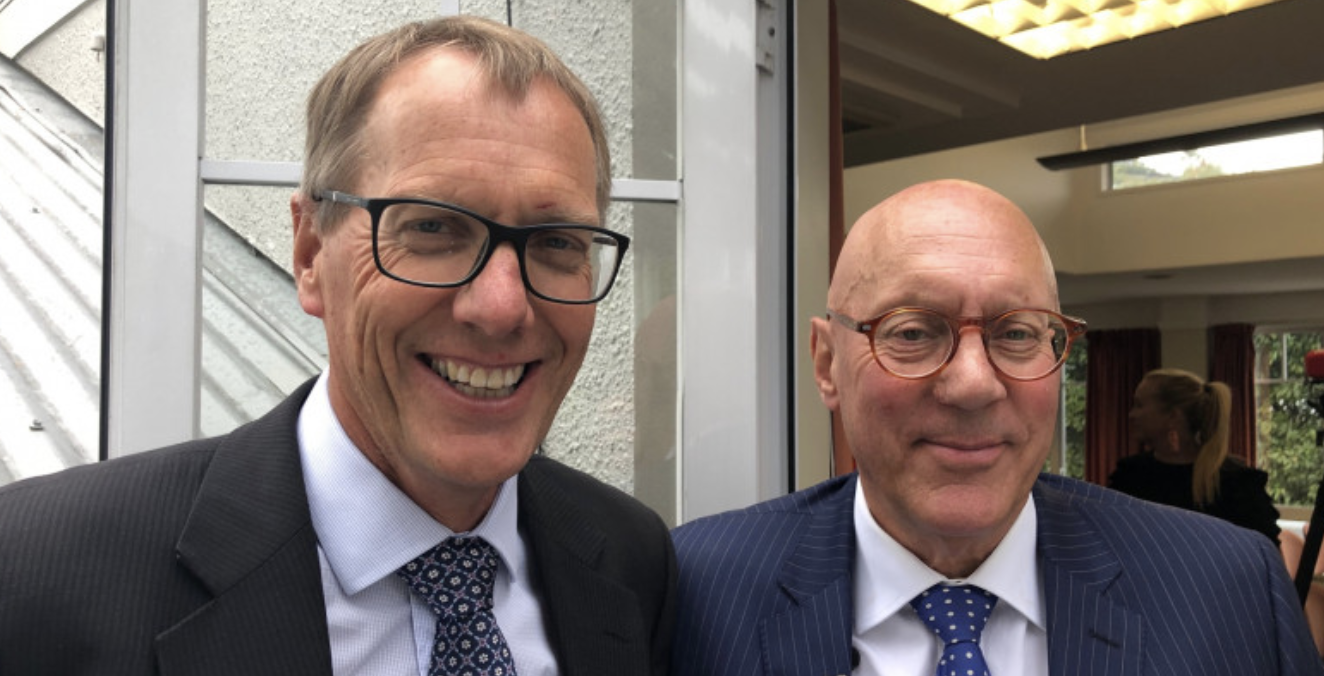
CEO Mike Theelen and Mayor Jim Boult - too close for comfort?
To his credit, the mayor is committed and works tirelessly for our District. He is an experienced administrator and works closely, collaboratively, with the CEO. He and the CEO function largely as one, as an administrative duo. But there’s the rub. The mayor has distanced himself from the Council’s normal oversight of QLDC’s administrative functions. The Council has become less able to hold the CEO and administration to account for fulfilling their executive responsibilities and implementing the Council’s approved plans, and generally for complying with the Council’s policies and strategies for the development of our District.
The problem of holding the administration accountable is not new. The community has little idea whether the targets set out in the annual and 10-year plans are being met. Recently this problem has become worse. Crux has reported on QLDC’s excessive expenditures on consultants, questioning some of their deliverables, and pointing to irregularities in the procurement of some of their services.
Crux has asked QLDC for the details of how one particular single-source contract was procured (costing over $500,000) and to demonstrate that QLDC has got its money’s worth. Similarly, some councilors have asked the mayor for clarification of Terms of Reference for consultant MartinJenkins to carry out economic and social assessments as inputs to preparation of the Queenstown Airport Corporation’s Statement of Intent (SOI).
These are legitimate requests, but the information from QLDC has not been forthcoming. The mayor has sided with the administration in obfuscating and delaying, and basically doing whatever they can to avoid providing the information. Lest, presumably, it could prove embarrassing, or worse.
These matters go to the heart of accountability of QLDC to our community and ratepayers. And correspondingly, the administration’s accountability to our elected representatives. Implicit in our democracy is a social contract, embodying these and other norms of how our Council should represent us. Sadly, this contract is breaking down. The above irregularities, as well as the mayor’s enthusiasm to approve the Airport Corporation’s SOI, run contrary to the will and expectations of our community. They are also leading to a loss of trust in our Council.
To avoid these conflicts and restore trust, our Council should strengthen the division of responsibilities between the administration and our elected representatives. The mayor should side clearly with the Council rather than with the administration. The relationship with the administration should be arms-length, with the purport to hold the administration accountable.
We may remind our mayor and councilors that a competent council should work with the community in defining and affirming a guiding vision for our future. They should establish clear goals and policies consistent with the vision, all the while conforming with our core values. Within these parameters, the administration prepares plans and budgets, which in turn are subject to approval by the Council. The CEO should manage the day-to-day operations, implementing the plans and projects, and should inform the Council on progress in meeting the milestones and targets set out in the plans. It follows that the Council should hold the CEO accountable for the results. The Council itself will be responsible for the outcomes.

QLDC CEO Mike Theelen - too much power and too little accountability? Do we need a separate structure to monitor and evaluate QLDC's management performance?
In order to strengthen the administration’s accountability for delivery of results, the Council should establish an independent unit within the administration to monitor and evaluate the administration’s performance in meeting the targets and objectives in the annual plans. This unit should report directly to the Council, not the CEO, and should prepare reports periodically for councilors’ consideration. For transparency, once the report has been considered by the Council, it should be made available promptly to the public.
Our Values
In 2002 QLDC, guided by Auckland-based consultants, completed a report entitled, “Tomorrow’s Queenstown – Vision, Issues and Directions.” The report presented the community’s vision, strategic goals, and priorities for the next 10 to 20 years. Not least, it also set out the community’s core values, which QLDC included in its annual and 10-year plans from 2002 until 2018.
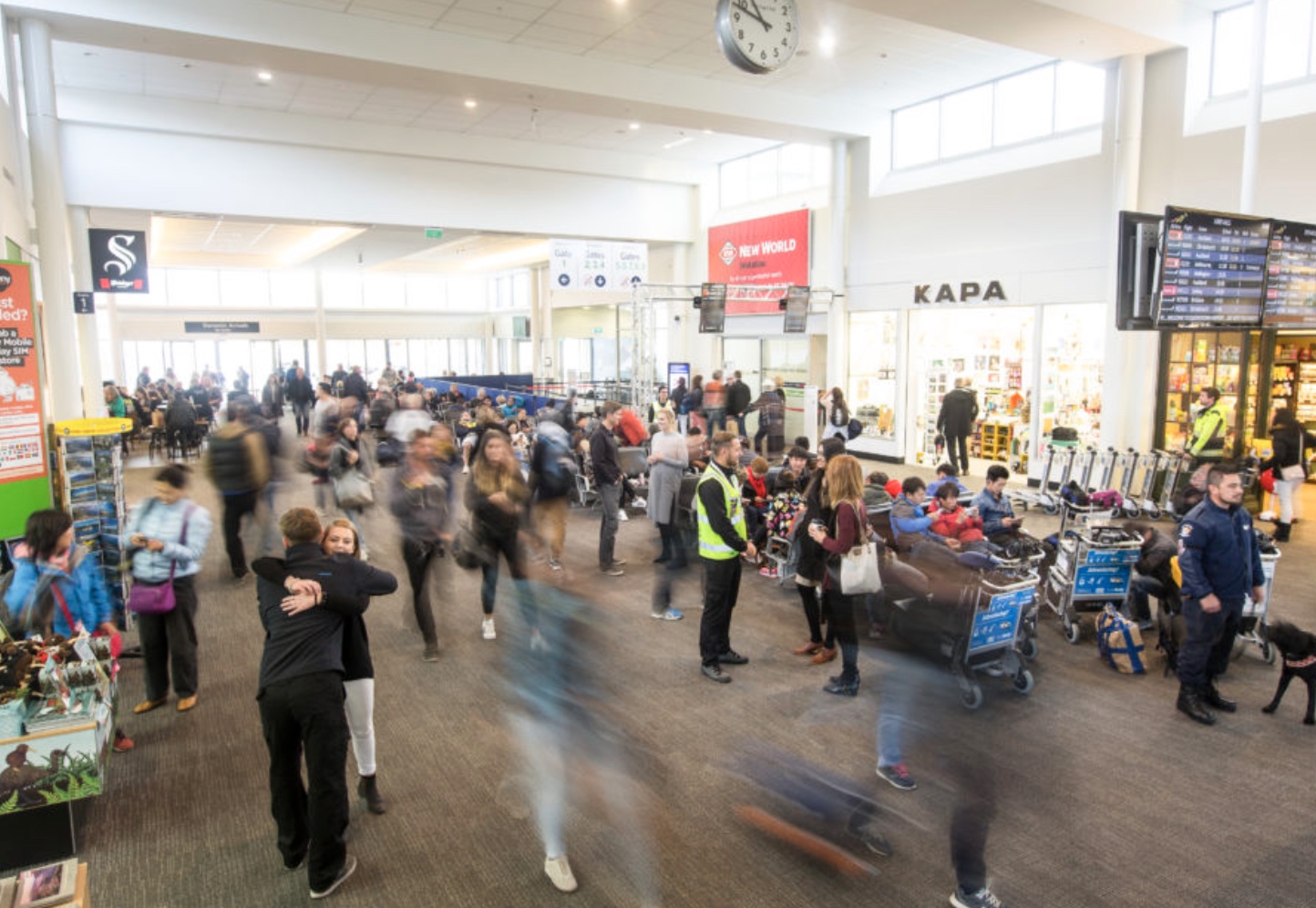
Have controversial airport expansion plans reflected the values and goals expected by the community?
Values are shared and enduring beliefs, our enduring aspirations that we hold strongly. They establish a framework or boundaries within which we deduce our goals and priorities, and plans, to enhance our wellbeing.
These values were: (i) Sustainable growth management; (ii) Quality landscapes and natural environment with enhanced public access; (iii) A safe and healthy community that is strong, diverse and inclusive for people of all age groups and incomes; (iv) Effective and efficient infrastructure that meets the needs of growth; (v) High quality urban environments, respectful of the character of individual communities; (vi) A strong and diverse economy; and (vii) Preservation and celebration of the District’s local cultural heritage. These values are anchored in principles of sustainability, and in maintaining the wellbeing and lifestyle choices that brought most residents to the Wakatipu.
In its 10-year Plan (2018-2028), QLDC omitted these expressions of the community’s values. And notably, the omission took place without community consultation. The mayor and CEO offered their vision as, “In ten years’ time, experiencing and living in this District must be better than it is today.” Rather bland, but OK. Later, the document presented another vision under three headings: (a) Vibrant communities, (b) Enduring landscapes, and (c) Bold leadership. I may note, “bold leadership” is not a vision. Leadership is an input, a means whereby the community may realize its vision.
Our values should be clearly set out on QLDC’s website and in its plans. In the course of preparing the plans, if components are incongruent with our values they should be reworked.
Similarly, a social assessment must be compliant with our values. In the absence of clarity over our values (they were dropped from the 10-year Plan), MartinJenkins should have begun its workshops and consultations to affirm the community’s values or assist in recasting them to the community’s aspirations of today. As noted, the TOR for this consultancy were not disclosed by QLDC, so it is difficult to comment further, beyond the point that economic and social assessments should be compliant with our values.
Conclusion
The coronavirus is causing unprecedented pain in our Lakes District. If there’s a silver lining to these economic and social disruptions, it is an opportunity, more than ever before, to reassess what is important to us and reaffirm our core values. It is also an opportunity for QLDC to reassess, beyond its statutory responsibilities, how it can be more responsive to our priorities and pay more respect for our values. This is the essence of a democracy and the social contract we expect QLDC to have with our community. We must aspire to stronger economic growth on a per capita basis, and to a more equitable distribution of that growth. Equally, we must strive to sustain the quality of our natural environment and reduce our carbon footprint. Ultimately, we seek positive social outcomes with enhanced wellbeing for all of us resident in the District and not just the few.









